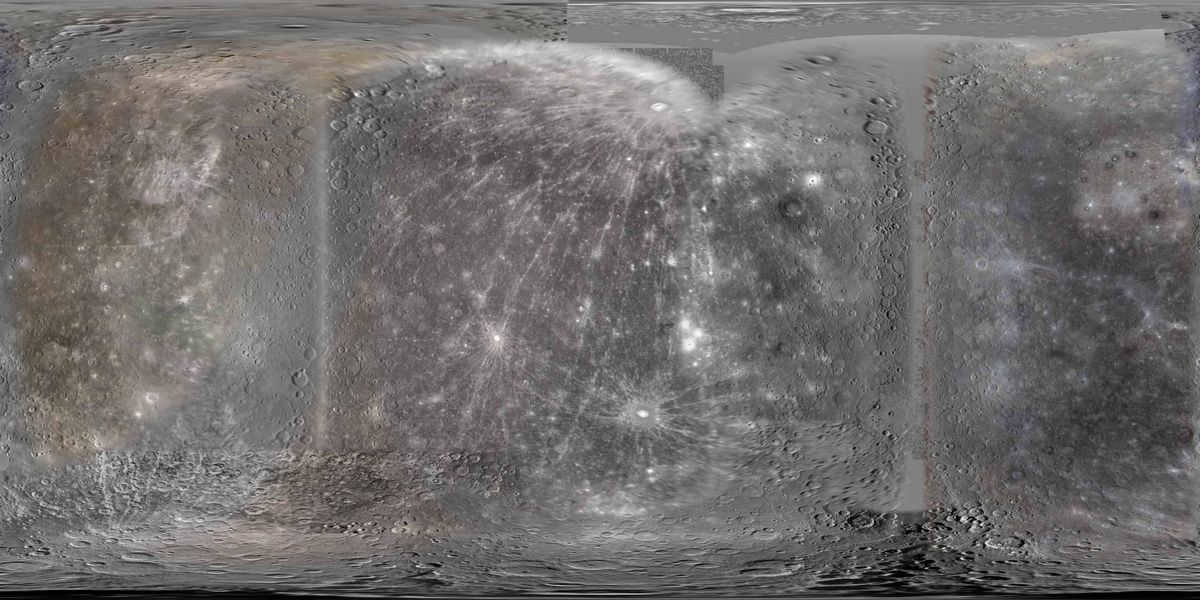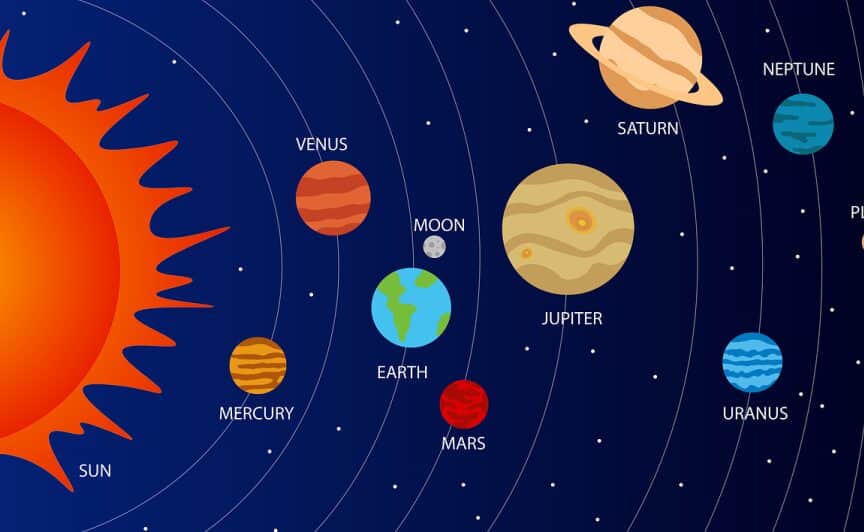Mercury, the smallest planet in our solar system, is known for its short years, long days, extreme temperatures, and peculiar sunsets.
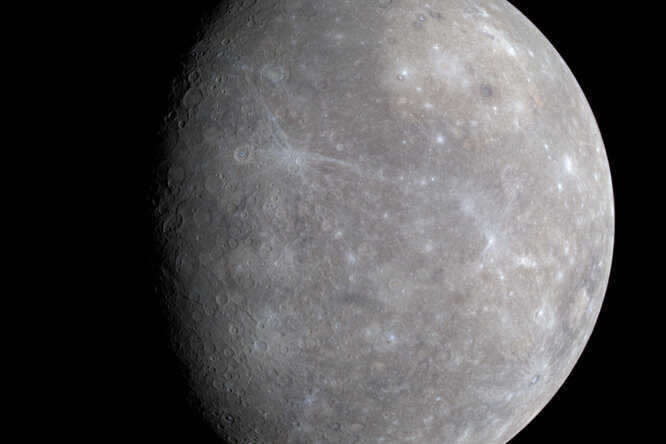
Mercury, the planet closest to the sun, has a faster revolution around the sun compared to other planets. This is why it was named after the Roman god known for his speed, the messenger god.
It is important to note that self-medication is not recommended. Our articles provide the latest scientific information and insights from experts in the field of health. However, it is always best to consult with a doctor for proper diagnosis and treatment.
It should be noted that Mercury is the planet with the second highest density, second only to Earth. This is due to its enormous metallic core, which measures approximately 3,600 to 3,800 kilometers in width, accounting for about 75% of the planet’s overall diameter. In contrast, the outer shell of Mercury is relatively thin, measuring only 500 to 600 kilometers in thickness. The perplexing aspect of Mercury lies in its composition, as it contains a significant amount of volatile elements. This has left scientists puzzled for many years.
Surface of Mercury
Due to its proximity to the Sun, the surface of Mercury can reach an incredibly high temperature of 450 °C. However, since Mercury lacks a substantial atmosphere to retain heat, temperatures can plummet to -170 °C at night, resulting in a fluctuation of over 600 °C, which is the greatest among all the planets in the solar system.

Mercury does not possess a significant atmosphere capable of shielding it from impacts, thus the surface of the planet is covered in craters. Roughly 4 billion years ago, an asteroid with a diameter of approximately 100 km collided with Mercury, generating a force equivalent to 1 trillion 1-megaton bombs. This colossal impact created an enormous crater spanning about 1,550 km in width, now known as the Caloris Basin. To put it in perspective, this crater could comfortably fit the entire state of Texas inside. According to a study conducted in 2011, it is hypothesized that another large impact may have played a role in Mercury’s peculiar rotation.
Mercury’s magnetic field
The magnetic field of Mercury is an interesting phenomenon.
One of the most surprising findings made by the Mariner 10 spacecraft was the discovery that Mercury possesses a magnetic field. According to current theories, planets typically generate magnetic fields if they have a rapidly spinning core that is molten. However, Mercury’s orbit takes a lengthy 59 days, and its small size suggests that its core should have cooled down a long time ago. Interestingly, observations made by the MESSENGER spacecraft have revealed that Mercury’s magnetic field is approximately three times stronger in the northern hemisphere compared to the southern hemisphere. Scientists have proposed a hypothesis that suggests Mercury’s iron core may solidify at the outer edge instead of the inner edge. Despite being only 1% as strong as Earth’s magnetic field, Mercury’s magnetic field is highly active. This magnetic field frequently interacts with the solar wind, a stream of charged particles coming from the sun, resulting in the creation of powerful magnetic tornadoes. These tornadoes propel the fast and hot plasma of the solar wind towards the surface of the planet.
Is there any atmosphere on Mercury?
Instead of a dense atmosphere, Mercury possesses a very thin “exosphere” consisting of atoms that are expelled from its surface due to solar radiation, solar wind, and impacts from micrometeoroids. Essentially, Mercury’s atmosphere is the exosphere that covers its surface, creating a vacuum-like environment. According to NASA, this exosphere is composed of 42% oxygen, 29% sodium, 22% hydrogen, 6% helium, 0.5% potassium, and potentially small traces of argon, carbon dioxide, water, nitrogen, xenon, krypton, and neon.
Mercury’s orbit
Mercury revolves around the sun every 88 days on Earth, moving at a speed of almost 180,000 km/h, making it the fastest planet in the solar system. Its elliptical orbit is highly elongated, bringing Mercury as close as 47 million km and as far as 70 million km from the sun. If you were standing on Mercury when it is at its closest point to the Sun, it would appear three times larger than it does from Earth.
Interestingly, due to Mercury’s extremely elliptical orbit and its rotation period of about 59 Earth days, observers on the planet’s scorching surface would witness the sun appearing to rise, briefly set, and then rise again before moving westward across the sky. During sunset, the sun would seem to set, briefly rise, and then set again.
The initial probe to explore Mercury was Mariner 10, which captured images of roughly 45% of the planet’s surface and identified its magnetic field.
NASA’s MESSENGER orbiter was the subsequent spacecraft to visit Mercury. Upon its arrival in March 2011, it became the pioneering spacecraft to enter the planet’s orbit. The mission came to an abrupt conclusion on April 30, 2015, when the spacecraft intentionally crashed into the planet’s surface due to depleted fuel reserves, allowing scientists to study the aftermath.
In 2012, a group of meteorites was discovered in Morocco that scientists believe could have originated from the planet Mercury. If this is true, it would mean that the rocky planet is now part of a very exclusive group, along with the Moon, Mars, and the large asteroid Vesta, in having samples available for study here on Earth. In 2016, scientists unveiled the world’s first comprehensive digital model of Mercury, created by combining over 10,000 images from the MESSENGER spacecraft. This model allows viewers to explore the vast landscapes of this small world.
A new mission to Mercury, called BepiColombo, was launched in 2018. This mission is a joint effort between the European and Japanese space agencies. The scientific mission itself is set to begin in 2025 and will last approximately one Earth year, or four years on Mercury.
TechInsider Online Edition
Founder of "Fashion Press" LLC: 119435, Moscow, Bolshoi Savvinsky per. 12, p. 6, floor 3, room II. 6, floor 3, room II;
Editorial office address: 119435, Moscow, Bolshoi Savvinsky per. 12, p. 12, str. 6, floor 3, room II;
Editor-in-Chief: Nikita Vasilenok
Editorial office e-mail address: [email protected]
Editorial office phone number: +7 (495) 252-09-99
Information product label: 16+
The online edition is registered with the Federal Service for Supervision in the Sphere of Communications, Information Technologies and Mass Media. The registration number and date of decision on registration are as follows: series EL No. FS 77 – 84123, dated November 09, 2022.
© 2007 – 2023 "Fashion Press" Ltd.
By uploading content to the Website, the User gives "Fashion Press" LLC the non-exclusive permission to utilize, reproduce, distribute, create derivative works, and publicly display the materials, all without charge.
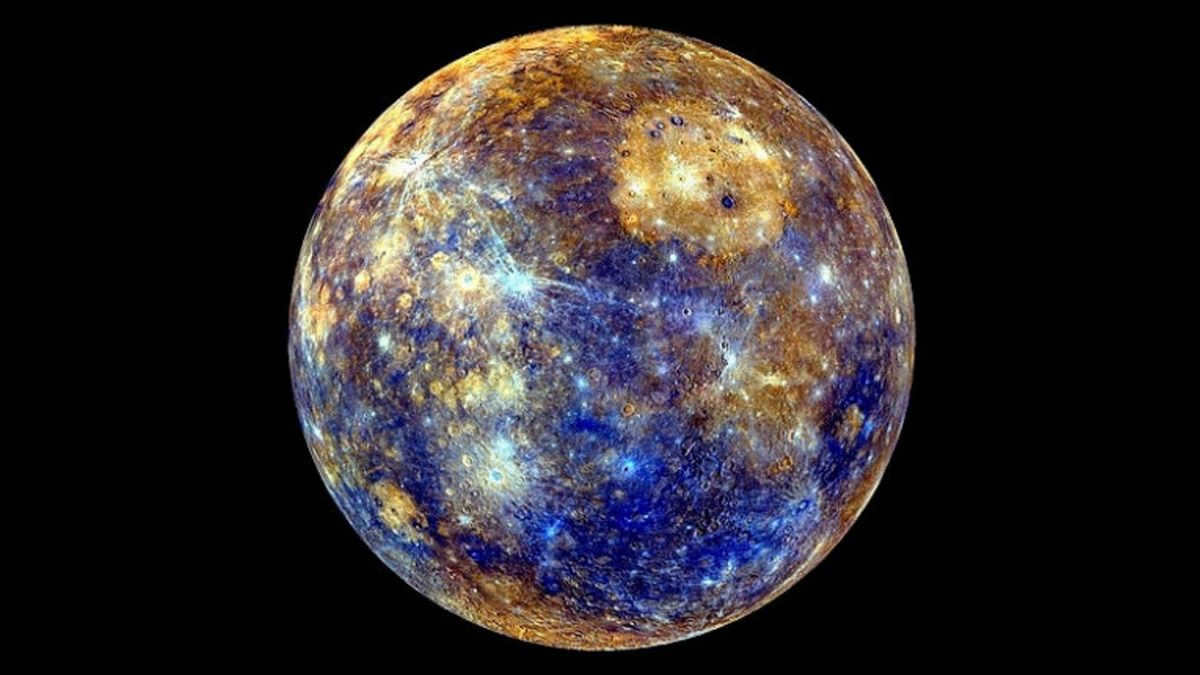
Billions of years ago, the planets of our solar system came into existence within a rotating disk of gas, dust, and rocks encircling the Sun. Each of the eight planets in our solar system is situated at varying distances from our star. Now, let’s delve into the unique features of the planet that holds the distinction of being the closest to the Sun.
What is the nearest planet to the Sun?
Mercury is the planet closest to the Sun. It revolves around the Sun at a distance of just 58 million kilometers. In contrast, the Earth is approximately 150 million kilometers away from the Sun. This implies that if an individual were on Mercury, the Sun would appear three times larger in the sky and would emit much more light.
The intense heat on Mercury is a result of its close proximity to the Sun. With an average temperature of approximately 450 degrees Celsius, Mercury is known for its extreme heat. However, despite being the closest planet to the Sun, it is actually Venus that holds the record for being the hottest planet in our solar system.
Due to the extreme temperatures and high levels of radiation on Mercury, the chances of finding any form of life on this planet are virtually non-existent.
The tiniest planet in our solar system
Mercury is officially recognized as the smallest planet in our solar system. With the reclassification of Pluto, Mercury now claims this unique distinction. Measuring just 4,878 kilometers in diameter, the diminutive planet Mercury is only slightly larger than our Moon.
Mercury’s orbit around the Sun
Due to its close proximity to the Sun, Mercury completes a full revolution around our star in a very short amount of time. It only takes Mercury 88 Earth days to complete one orbit, which means that a year on Mercury is equivalent to 88 Earth days.
The duration of a day on Mercury
However, because of Mercury’s close proximity to the Sun, its rotation is incredibly slow. In fact, Mercury has the longest days out of all the planets in our solar system. One day on Mercury is equivalent to approximately 58.6 days on Earth.
When an object is located closer to a larger celestial body, there is a higher chance that its rotation will become synchronized with the massive body around which it orbits.
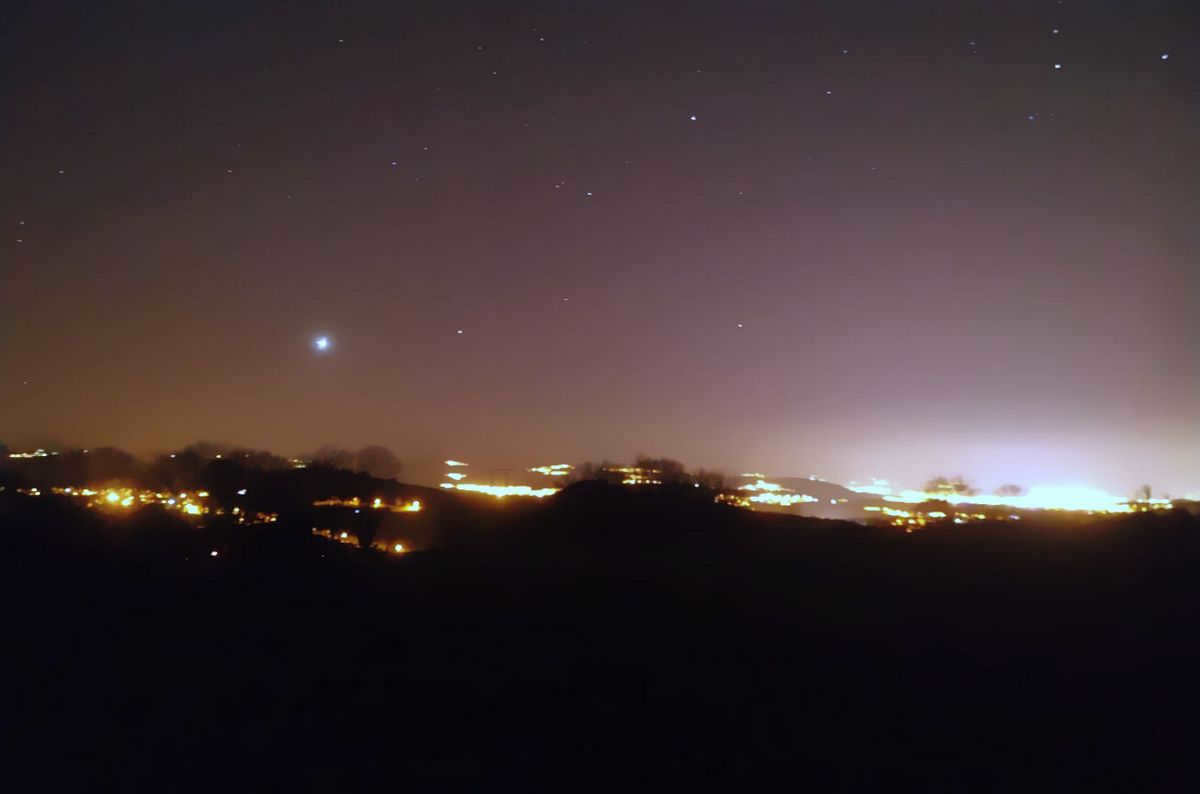
When gazing at the night sky, some of the celestial bodies you perceive as “stars” are actually not stars but rather planets.
Out of the eight planets within our solar system, five are observable with the naked eye, excluding Earth naturally: Mercury, Venus, Mars, Jupiter, and Saturn.
Planets may resemble distant stars, but with proper knowledge, we can easily identify them. Moreover, due to their orbits around the Sun, their positions change across the sky over time, be it days, months, or even years.
In fact, astronomers in ancient Rome and Greece have been tracking and observing these planets for thousands of years, viewing them as deities.
Mercury (known as Hermes to the Greeks), the planet nearest to the Sun and the swiftest in motion, was revered as the messenger of the gods, traversing the sky amidst the stars.
Saturn (known as Chronos in Greek mythology), the most distant visible planet from Earth, is also the slowest in its movement across the sky. It was revered as the god of time.
Mars (called Ares by the Greeks) is easily distinguishable by its red hue and is closely associated with the concept of war. Its two moons, Phobos and Deimos, which were discovered much later, were named after the gods of fear and terror, respectively.
Jupiter (known as Zeus to both the Romans and Greeks) is considered the supreme ruler and father of all the gods.
In this article, we will provide you with some tips on how to spot planets using only your naked eye. For certain planets, it is actually quite simple!
Mercury
Mercury is the smallest planet in our solar system, named after the Roman god of commerce, travel, and communication. It is the closest planet to the Sun and has no moons or rings. Mercury is known for its extreme temperatures, with temperatures reaching up to 800 degrees Fahrenheit (430 degrees Celsius) during the day and dropping to -290 degrees Fahrenheit (-180 degrees Celsius) at night.
Mercury’s surface is covered in craters, similar to the Moon. It also has a thin atmosphere, which is mostly made up of atoms that have been blown away by the solar wind. The planet’s surface is rocky and has valleys, mountains, and plains. Mercury also has a large iron core, making it the second-densest planet in the solar system after Earth.
Mercury takes about 88 Earth days to complete one orbit around the Sun, and it rotates on its axis at a much slower rate than any other planet. One day on Mercury is equal to about 176 Earth days.
Despite its small size, Mercury has been visited by spacecraft. The first mission to Mercury was Mariner 10 in 1974. It provided the first close-up images of the planet and discovered its magnetic field. The next mission to Mercury was the MESSENGER spacecraft, which orbited the planet from 2011 to 2015. MESSENGER collected valuable data about Mercury’s surface, composition, and magnetic field.
In the future, there are plans to send more missions to Mercury to further study this intriguing planet and its unique characteristics.
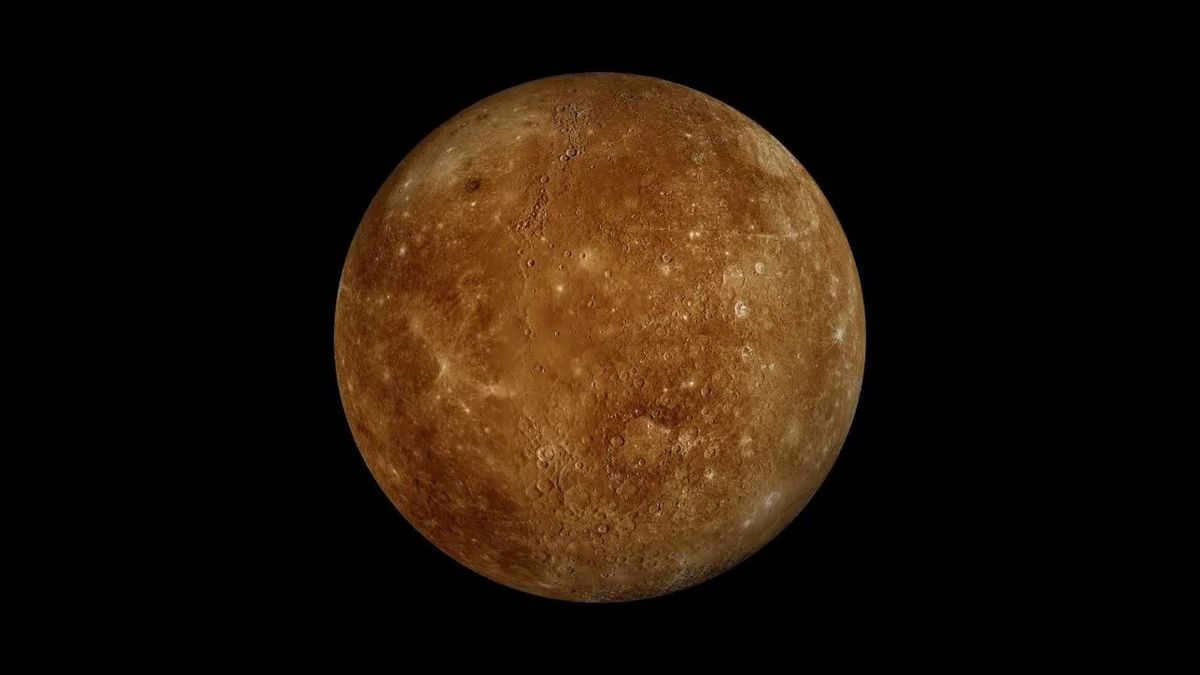
Mercury is the nearest planet to the Sun. Because of its proximity to the Sun, it can be challenging to observe. Mercury can only be seen at night, but due to its closeness to the Sun, it is also visible in the sky. Therefore, it can only be observed shortly after sunset or just before sunrise. The light of the Sun below the horizon can mask Mercury if it is observed too early or too late.
When Mercury is visible, it appears relatively bright and is located in the plane of the ecliptic, which is the plane that includes all the other planets. If you are able to spot Venus, which is the easiest planet to detect, you can use it as a reference point to locate Mercury, as they will both be on the same plane near the Sun.
As mentioned earlier, Venus is the most recognizable planet, and we will discuss it in more detail shortly.
Venus
Venus, also known as the “evening star” or the “morning star,” is the second planet from the Sun in our solar system. It is named after the Roman goddess of love and beauty. Venus is often referred to as Earth’s “sister planet” because of its similar size and composition.
Venus has a thick atmosphere made up mostly of carbon dioxide, with clouds of sulfuric acid that create a dense and toxic environment. The surface of Venus is extremely hot, with temperatures reaching up to 900 degrees Fahrenheit (475 degrees Celsius). The high temperatures are due to the greenhouse effect caused by the dense atmosphere trapping heat from the Sun.
Despite its harsh conditions, Venus has been the subject of many scientific missions and observations. These studies have revealed that Venus has a complex geology, with volcanoes, mountains, and vast plains. The planet also has a unique rotation pattern, with a day on Venus lasting longer than its year, making it the slowest rotating planet in our solar system.
One of the most fascinating features of Venus is its thick cloud cover, which prevents us from seeing its surface in visible light. However, scientists have used radar imaging to map the planet’s surface and have discovered evidence of past volcanic activity and tectonic movement.
Venus has also been a target of interest for astronomers searching for signs of life beyond Earth. The planet’s proximity to Earth and its similar size have led scientists to speculate about the possibility of microbial life in Venus’ clouds. However, further exploration and research are needed to determine if Venus could support any form of life.
In conclusion, Venus is a captivating planet with many unique characteristics. Its extreme conditions and mysterious cloud cover make it an intriguing subject for scientific investigation. As we continue to explore our solar system and beyond, Venus will undoubtedly remain a fascinating and important object of study.
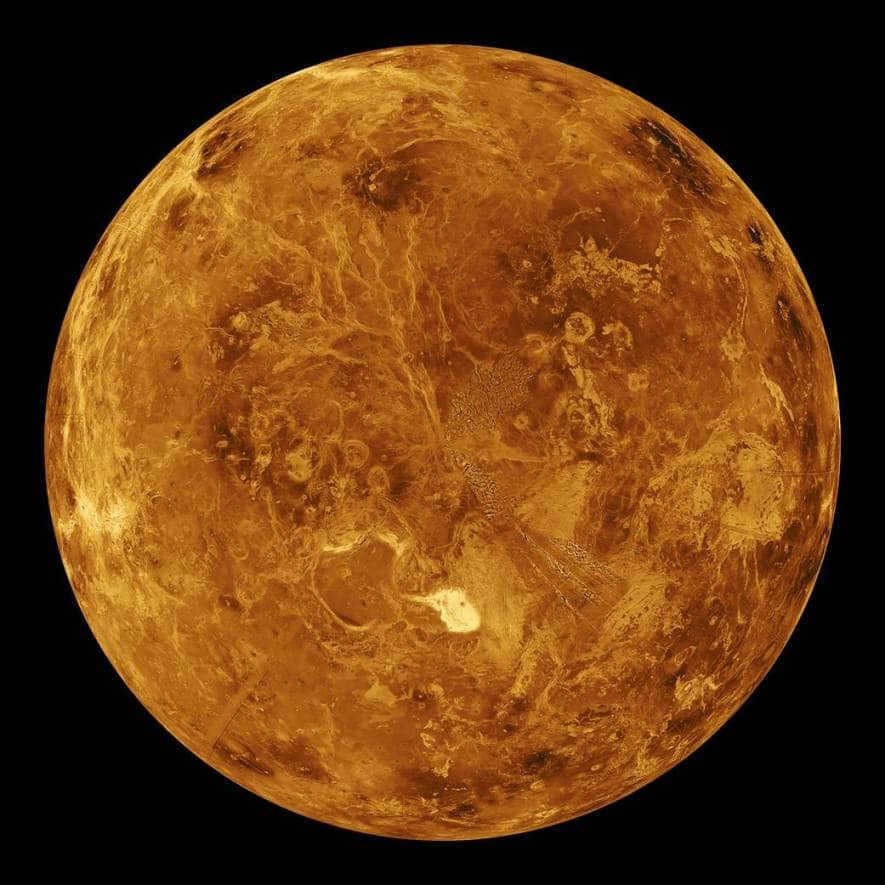
Venus, in addition to the Sun and Moon, is the most radiant star in the celestial sphere. It emits such a luminous glow that it is frequently mistaken for an unidentified flying object. This misidentification occurs due to Venus being the nearest celestial body to Earth, causing its surface to reflect the intense rays of the Sun with remarkable brilliance.
When Venus graces the sky with its presence, it commonly assumes the role of the initial “star” to appear in the evening or the final one to withdraw in the morning. Its position is typically above the horizon on the side where the Sun resides. On occasion, Venus can even be observed approximately thirty minutes after sunrise, during the period when the Sun remains close to the horizon.
However, Venus remains visible for a considerably longer duration compared to Mercury: it can be observed up to three hours after sunset (or three hours before sunrise), although not much longer because it retires to rest.
Both Venus and Mercury are situated closer to the Sun in comparison to Earth. As a result, their positions in the sky are consistently near the Sun. Given that the Sun sets in the west, if you believe you observe Venus in the east during the evening of the observation, you are likely mistaken: it is not Venus. If it is an exceptionally luminous celestial object, it is probable that you have sighted Jupiter, which is also highly luminous.
Regardless, if you perceive an unusually brilliant “star” during the night at sunset or in the morning at sunrise, it is unquestionably Venus.
Mars
Mars is situated at a greater distance from the Sun compared to Earth. It consistently stays within the plane of the ecliptic, which encompasses the planets and therefore aligns with the axis that spans the sky. As a result, this planet can be observed from any location in the sky, whether it is positioned on the side of the Sun or on the opposite side. Consequently, Mars can be seen even in the middle of the night, not solely during the sunrise and sunset like Venus and Mercury.
Mars is commonly known as the Red Planet, and this designation is well-founded: Mars distinctly displays a reddish hue in the sky!
This coloration is attributed to the presence of iron oxide, commonly known as rust, which is predominantly red-orange and abundant on the planet’s surface.
Mars is also relatively small in size, but its proximity to the solar system ensures that it remains consistently visible, unless, of course, it is obscured by the Sun or positioned below the horizon.
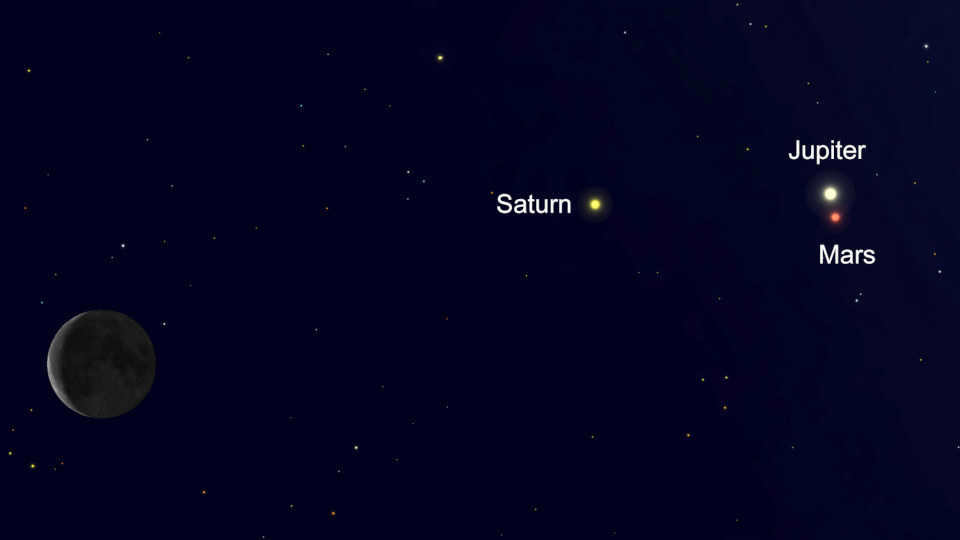
Given these circumstances, it is simple to observe this radiant star alongside a remarkably brilliant Venus or Jupiter.
In conclusion, and purely for the sake of poetry, understand that when gazing upon the celestial body known as Mars, there exists a small probability that you may, in turn, be observed by Mars. Not by Martians or humans, of course, but rather by one of the select few Martian robots that have been diligently exploring the planet’s surface for years.
These impressive robots have captured photographs and transmitted them back to Earth, showcasing our blue planet in the Martian sky, which is also tinted blue due to its stunning atmosphere, rich in CO2:
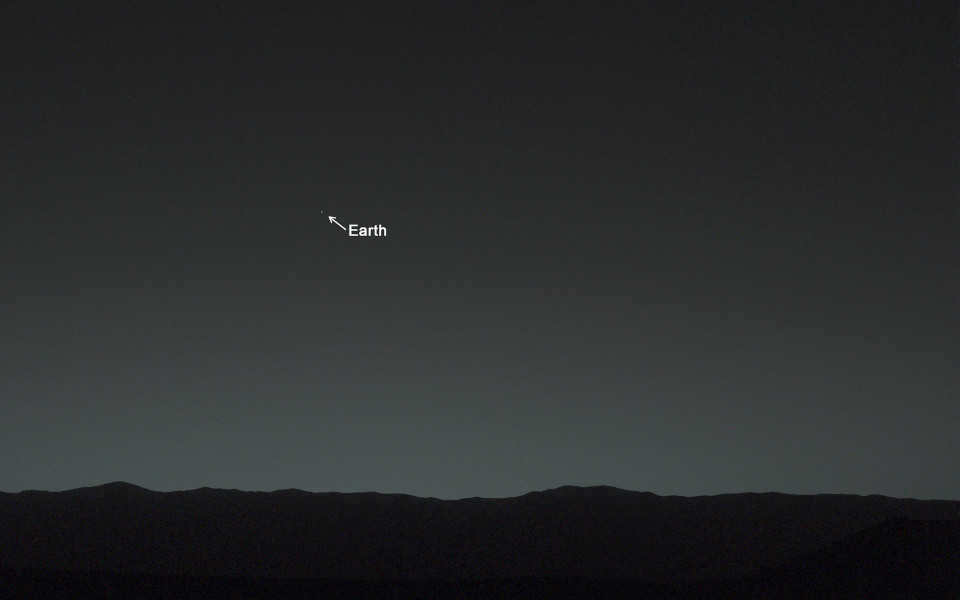
Mars currently holds the distinction of being one of the two celestial bodies that has captured an image of Earth from its own surface, with the other being the Moon.
Jupiter
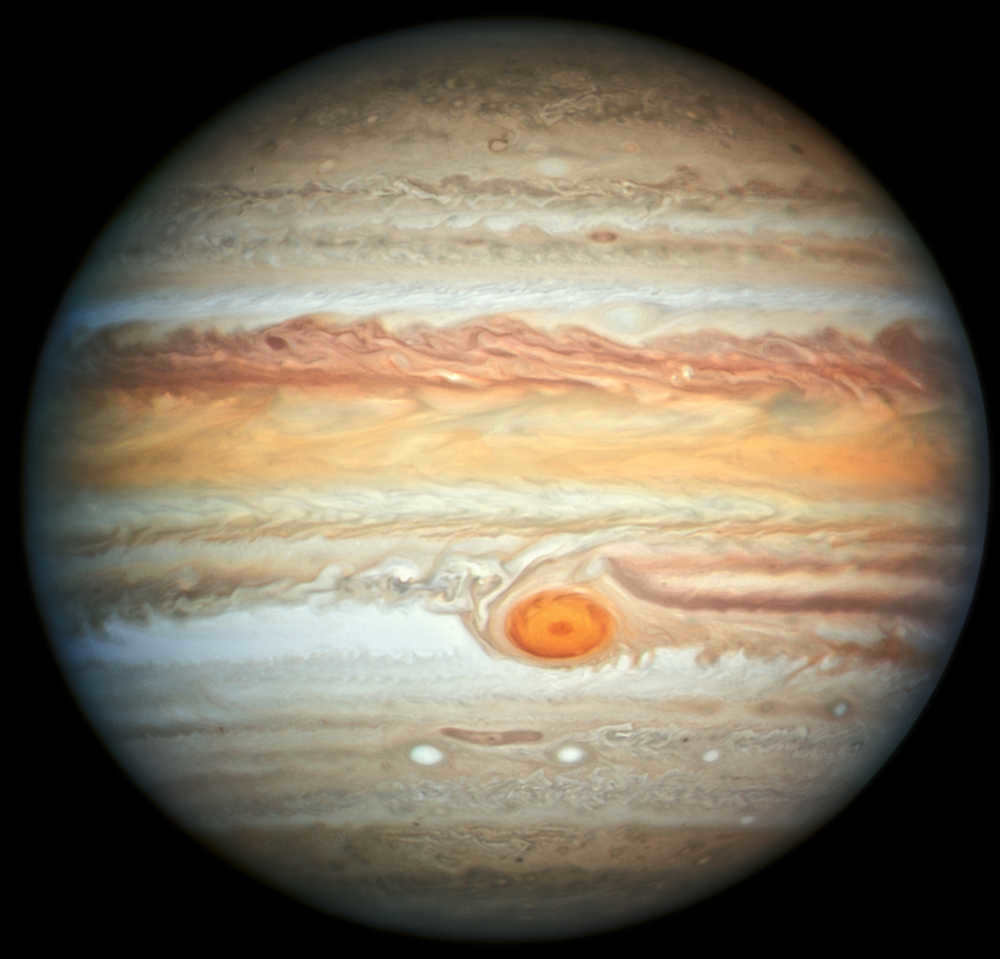
Due to its large size and relatively close proximity, the planet Jupiter is always easily visible. It is often the fourth brightest object in the sky, following Venus, the Moon, and the Sun. Unlike stars, Jupiter does not twinkle, making it easily recognizable. Additionally, Jupiter has the largest apparent size among all the visible planets.
Similar to Mars, Jupiter is further from the Sun than it is from Earth. As a result, it can be seen from almost any location along the planetary axis and at any time.
When observed through a telescope or even with good binoculars, Jupiter’s prominent features include its large red spot (if it is facing Earth) and its four largest moons: Io, Ganymede, Europa, and Callisto.
These are the moons of Galileo’s discovery, which he was able to observe through his revolutionary telescope that he originally created for naval purposes, four centuries ago. Since that time, over 60 additional moons have been found orbiting Jupiter, although they are too minuscule to be visible from the comfort of our homes.
Each of these celestial bodies is a distinct world unto itself. Particularly noteworthy is Europa, which holds promise as a possible haven for life while being heated by the immense presence of Jupiter. Conversely, Io is situated so close to its parent planet that it is gravitationally locked, resulting in it being the most explosively volcanic moon within our solar system.
By diligently observing this fascinating system using an astronomical instrument for a few hours, one can witness the majestic rotation of the planet, the emergence and disappearance of its prominent red spot, and the graceful movement of its moons along their designated orbits.
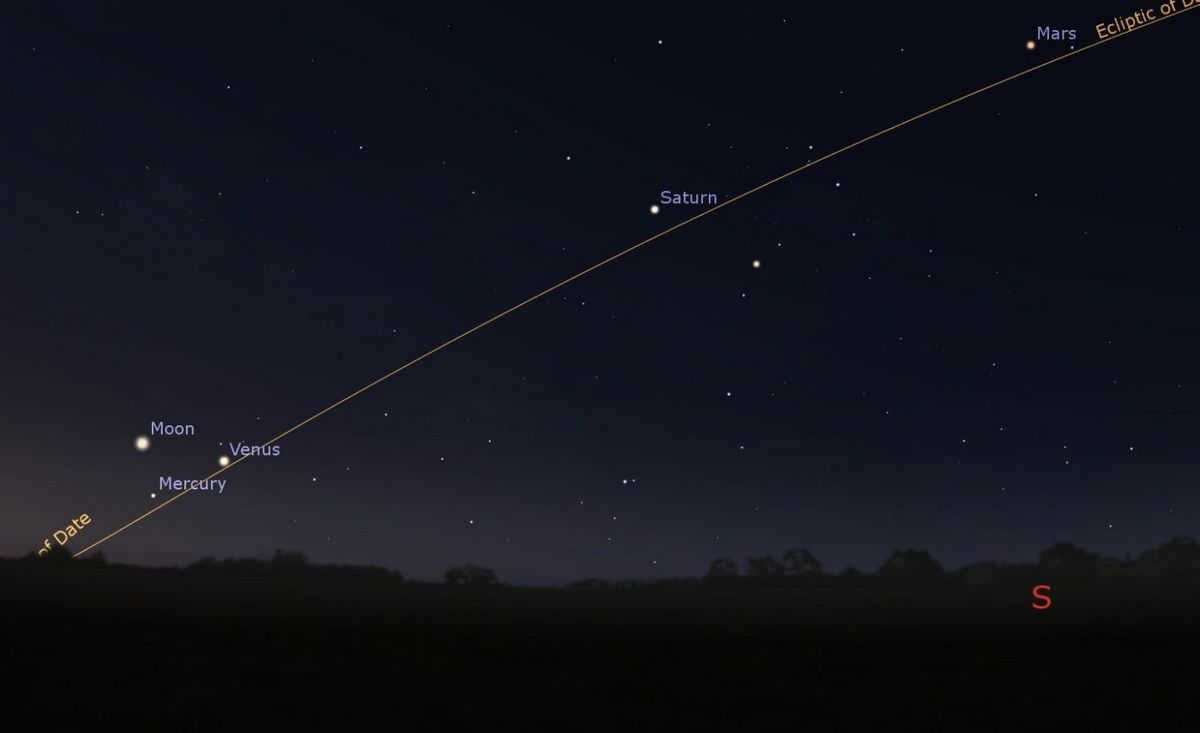
Saturn is positioned farther from the other celestial bodies in our solar system and exhibits a significantly lower luminosity. Depending on the specific period during the year, it may even become obscured or temporarily invisible due to the Sun’s presence, rendering it unobservable for extended periods of time.
Saturn achieves its maximum brightness when its striking rings are fully visible and brilliantly illuminated by the Sun, thereby enhancing the overall luminosity of the planet when viewed from Earth.
This phenomenon occurs during the opposition of Saturn and Earth, when they are located on opposite sides of the Sun.
Similar to the behavior of other planets, Saturn does not emit its own light, but rather reflects the radiant energy emanating from the Sun. Consequently, its radiance differs from that of stars as it does not exhibit twinkling. If one is accustomed to this characteristic, it can serve as a relatively dependable indication for locating the planet.
Given that this planet has a pale yellow color and is not very bright, it is not as easily detectable as the others. Therefore, it is more convenient to locate it by comparing its position on an up-to-date celestial map or using a specialized app.
But what about Uranus? Neptune? What about Pluto?
Uranus is located too far away to be visible to the naked eye. If we know its location, we can observe it with a telescope, but it is too distant to see any details.
Neptune faces an even greater challenge when it comes to detection. Interestingly, this celestial body was actually discovered through calculations before it was observed using a telescope. The observations of Uranus revealed an irregular trajectory, leading astronomers to theorize the existence of another planet. Through careful measurements of disturbances over the years, they were able to calculate the approximate position of this new planet, which was eventually found in 1846, albeit at a slightly different angle than anticipated!
Now let’s talk about Pluto. Once considered a planet, it has since been reclassified as a “dwarf planet”. Due to its significant distance from the Sun and Earth, detecting it requires a powerful telescope, often several meters in size. Even with such advanced equipment, spotting Pluto remains a challenging task. It wasn’t until 1930 that this distant and elusive celestial body was finally discovered.
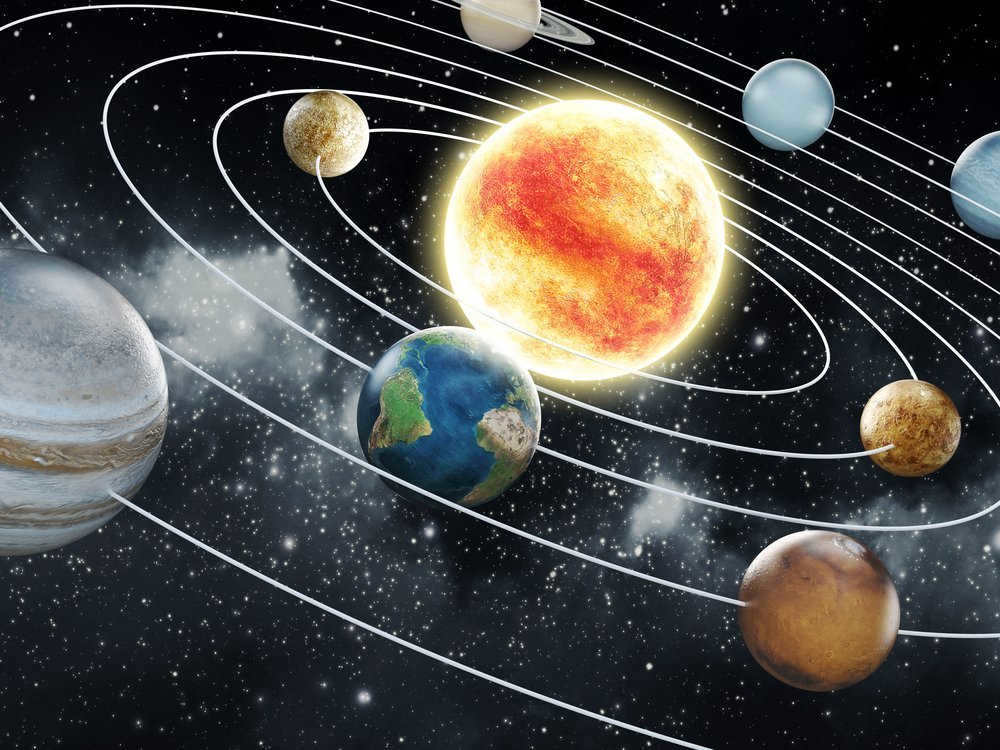
As a result of the early stages of the Sun’s formation, the gaseous layers surrounding planets located in close proximity to the star were blown away, leaving only their rocky cores.
Within our solar system, we find a diverse cosmic family. Each member possesses unique characteristics. For instance, the small rocky planets can be likened to children who enjoy being in close proximity to the Sun. On the other hand, the larger gas giants prefer to keep their chaotic tendencies at a distance from the children. Additionally, the icy and frigid members of the family rarely venture near the Sun, yet still hold a deep affection for it.
However, it is intriguing to ponder why the small rocky planets are significantly closer to the Sun compared to their larger gas counterparts. Did an event occur in the past that pushed the gas giants away? Or perhaps there were disagreements and conflicts between the small planets and the Sun itself?
What are the different types of planets in our solar system?
Before we delve into the main question, let’s first explore the distinctions between the various planets within our solar system.
Terrestrial planets
These are the rocky planets we’ve previously mentioned – the true stars of this article. Terrestrial planets are so named because they possess solid, rocky surfaces. Within our solar system, Mercury, Venus, Earth, and Mars are all examples of terrestrial planets. As we inhabit Earth, a terrestrial planet, we can easily conceptualize these other planets. Despite not being composed primarily of gases, it’s important to note that these planets may still possess gas layers, as we have observed in the atmospheres of Earth, Mars, and Venus.
Massive gas giants come after small rocky planets. As their name implies, they consist mostly of gases (although it is believed that they have a tiny solid core composed of metals and rocks). In our solar system, there are two gas giants: Jupiter and Saturn. These two planets are significantly bigger than their rocky counterparts.
Ice giants
Following a lengthy voyage from the Sun, we have at last arrived at the most distant members of this celestial clan – the ice giants. Our solar system is home to two ice giants: Neptune and Uranus. These two planets surpass the size of rocky planets, yet fall short of the magnitude of gas giants. Due to their immense distance from the Sun, the ice giants boast icy terrains and mountains beneath their gaseous exteriors.
In order to comprehend the reason why the terrestrial planets are located nearer to the Sun, we need to revisit the early stages of the Solar System’s existence when the planets were in the process of formation.
The nebula, an immense celestial cloud composed of gas and dust, underwent gravitational collapse and gave birth to our Sun. However, not all of the material within the nebula was utilized in the creation of the Sun. A significant portion of it (specifically that which was situated farther from the center) continued to orbit the newly emerged Sun.
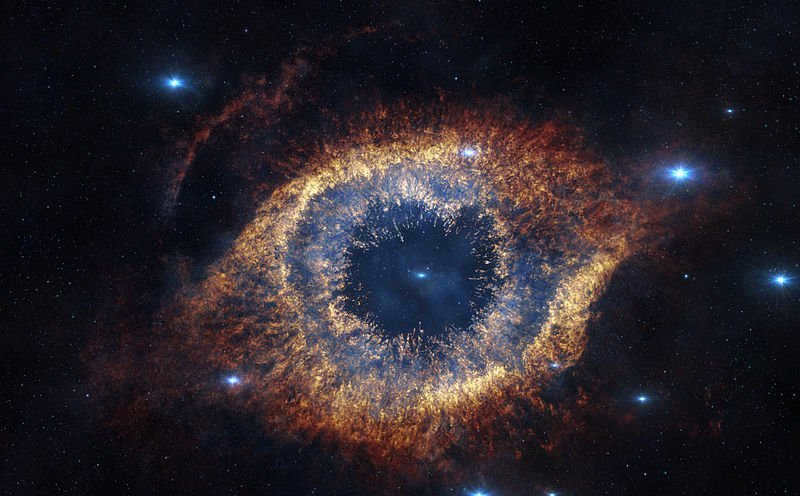
All the planets originated from this remnant of the nebula. Initially, the particles of dust conglomerated to create nuclei, and subsequently, the gases enveloped these nuclei. It is believed that there may have been over eight planets (the present count of planets in our solar system) that developed throughout this tumultuous period; however, they underwent collisions with one another, resulting in the creation of fresh, more substantial planets and nuclei.
What led to the movement of the rocky planets towards the Sun?
During the early stages of the solar system, there was a great deal of chaos. The planets, including our Sun, were in highly unusual and unstable states. This period was characterized by numerous collisions, explosions, and intense heat. These cataclysmic events had a profound impact on the structure and arrangement of our solar system in various ways.
The rocky planets we observe today were once surrounded by massive layers of gas, similar to gas giants and ice giants. However, during the tumultuous early years, the Sun emitted massive amounts of energy and matter into the solar system. The rocky planets closest to the Sun experienced the full force of these emissions. As a result, the gases surrounding these planets were stripped away, leaving behind only the rocky cores that eventually formed into Earth-like planets.
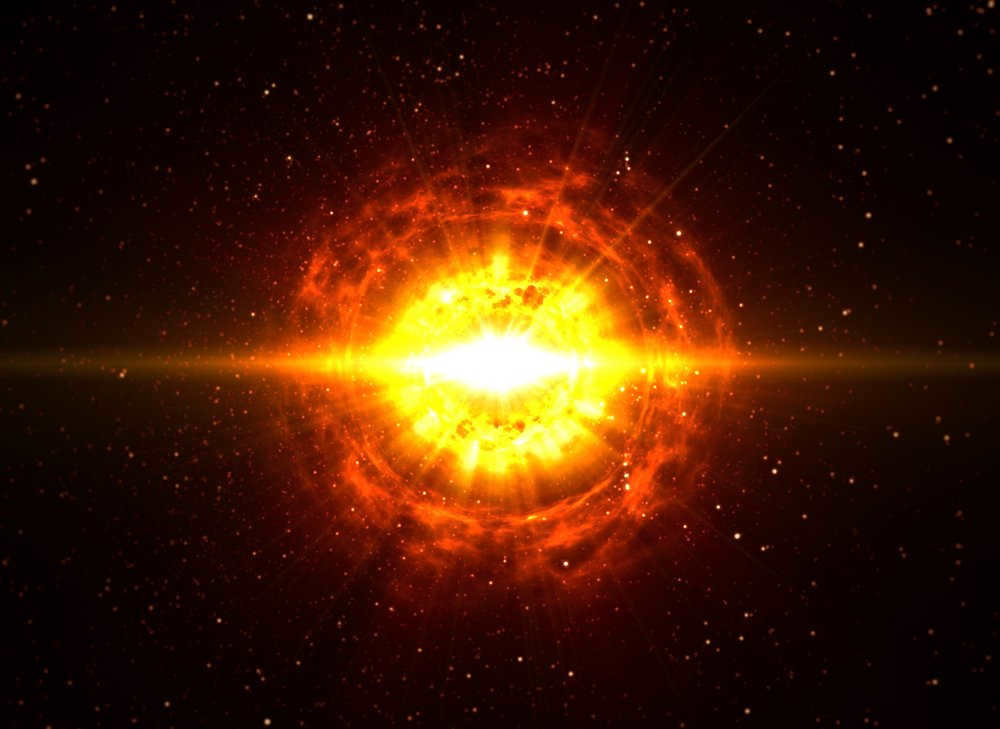
The rest of the planets were situated too distant from the Sun to undergo these currents, thus they were comparatively unaffected and took shape as the contemporary gas and ice giants.
Are rocky planets nearer to their stars a common feature in all solar systems?
Is this an observable pattern across the board? Are other solar systems in various parts of the universe exhibiting the same tendency, with rocky planets situated closer to the star and massive gas giants positioned quite far away?
Scientists have discovered numerous solar systems wherein gaseous planets (many of which are even more colossal than the gas giants in our solar system) are found closest to their stars.
The reason why rocky planets are located closer to the Sun can be traced back to a chaotic period in our solar system’s history. During this time, the newly formed Sun emitted powerful currents of energy and matter that blew away the gaseous layers surrounding the planets closest to it. As a result, these planets became smaller and composed primarily of rock.
Mercury, the first and smallest planet in our solar system, is a fascinating celestial body. Its name originates from a Roman god’s messenger and it has left a significant impact on various cultures and myths. Remarkably, Mercury can be observed in the sky without the need for instruments, and it exhibits its own phases.
Nevertheless, Mercury remains an enigmatic entity, offering intriguing mysteries for scientists to explore.


Curious details
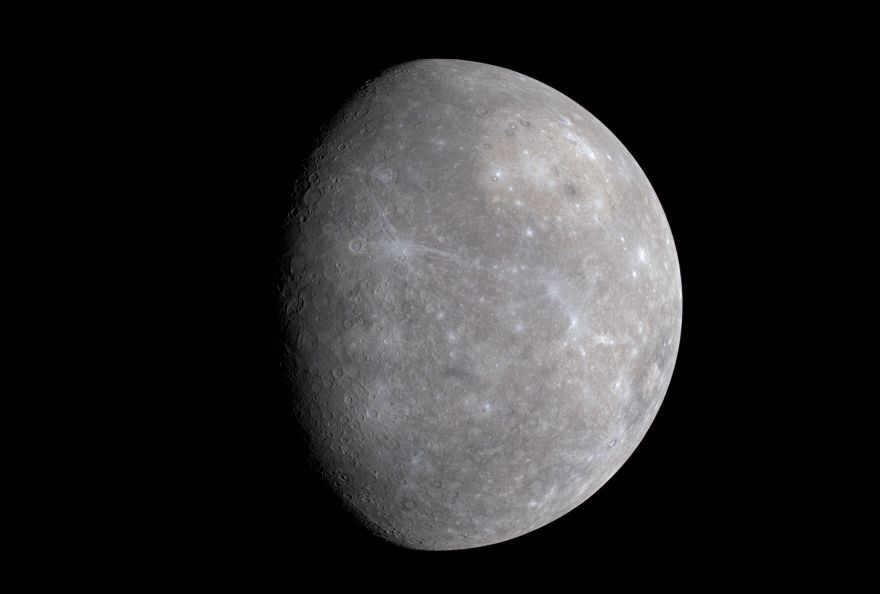
Let’s explore some fascinating information about the planet Mercury.
- Mercury has a solar day (midday interval) that lasts 176 days, and a sideric day (axial rotation) that lasts 59 days. It has the highest orbital eccentricity and is located at a distance of 46-70 million kilometers from the Sun.
- Mercury is one of the five planets that can be observed without the need for instruments. It has a diameter of 4879 km at the equator.
- Every cubic centimeter of Mercury has a mass of 5.4 grams. However, Earth has a higher overall mass due to Mercury being composed mainly of heavy metals and rocks.
- As the iron core of the planet cooled and contracted, the surface layer developed wrinkles that can stretch for hundreds of miles.
- Scientists speculate that the iron core of Mercury remains in a liquid state, which is a unique feature among small planets. This is believed to be due to the presence of sulfur, which lowers the melting point. The core accounts for approximately 42% of the planet’s volume.
- Despite being located further from the Sun, Venus consistently maintains the highest surface temperature due to the greenhouse effect. Mercury’s daytime temperature reaches up to 427°C, while the nighttime temperature drops to -173°C. Since Mercury lacks an atmospheric layer, it cannot evenly distribute heat across its surface.
- Mercury does not have the ability to renew its surface layer and erase crater scars, unlike other planets that undergo geologic processes. Interestingly, all of Mercury’s craters are named after artists, writers, and musicians. The basins on Mercury, which are impact formations larger than 250 kilometers in diameter, include the Plain of Heat, stretching an impressive 1,550 kilometers.
- Due to its close proximity to the Sun, Mercury has been extensively studied. Mariner 10 was able to orbit Mercury three times between 1974 and 1975, mapping almost half of its surface. MESSENGER also conducted a mission to Mercury in 2004.
- Mercury possesses only 38% of the gravity found on Earth. However, this is not sufficient to maintain a stable atmosphere, as it is constantly being destroyed by solar winds. Despite this, gas on Mercury is replenished by solar particles and dust.
Have your questions answered by a skilled tarotologist:
What does the future hold for you? How will your relationships develop? What is the best course of action for you to take?

Size, mass, and orbit
Mercury is known as the smallest planet in the solar system, with a radius of 2440 km and a mass of 3.3022 x 10 23 kg. In comparison to Earth, it is only 0.38 times the size. Although it may be smaller than some satellites, Mercury has a high density of 5.427 g/cm 3, ranking second only to Earth. The image below illustrates the contrast in size between Mercury and Earth.
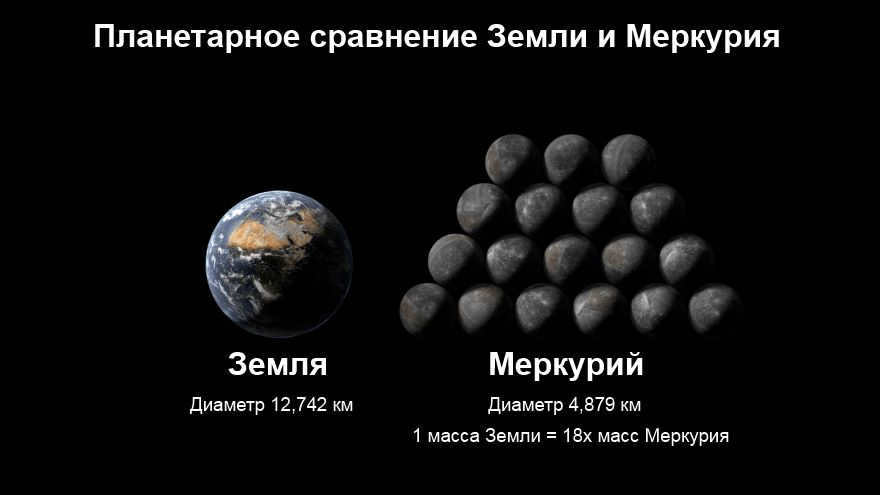
Comparison of Mercury and Earth
Mercury possesses the most eccentric orbit among all the planets. Its distance from the Sun can fluctuate between 46 million km (perihelion) and 70 million km (aphelion), making it unique compared to other planets. With an average orbital velocity of – 47322 km/s, it takes approximately 87.969 days for Mercury to complete its orbital path. The following table showcases the distinctive characteristics of Mercury.
Physical characteristics of the planet Mercury
| 2439.7 km |
| 2439.7 km |
| 2439.7 km |
| 15,329.1 km |
| 7.48-10 7 km² 0.147 times the terrestrial surface area |
| 6.083-10 10 km³ 0.056 times the terrestrial volume |
| 3.33-10 23 kg 0.055 times the terrestrial mass |
| 5.427 g/cm³ 0.984 times the terrestrial density |
The axis rotation rate of Mercury is 10,892 km/h, which means that a day on the planet lasts 58,646 Earth days. This indicates that Mercury is in a 3:2 resonance, with 3 axial rotations for every 2 orbital rotations.
The planet’s rotation is characterized by its eccentricity and slowness, resulting in a 176-day period for the planet to return to its original position. As a result, a day on this planet is twice as long as a year. Additionally, this planet boasts the lowest axial tilt, measuring at 0.027 degrees.
Mercury’s orbit and rotation
| 46,001,009 km 0.38709927 a. e. |
| 69,817,445 km 0.46670079 a. e. |
| 57 909 227 km 0.38709927 a. e. |
Composition and Surface
Mercury is composed of approximately 70% metallic materials and 30% silicate. The planet’s core, which is estimated to occupy about 42% of its total volume (compared to Earth’s 17%), is primarily made up of molten iron. Surrounding the core is a silicate layer that ranges from 500 to 700 kilometers in thickness. The surface of Mercury consists of a crust that measures between 100 and 300 kilometers in depth. Notably, the planet’s surface is marked by extensive ridges that extend for kilometers.
In comparison to other planets in the solar system, Mercury has the highest concentration of iron in its core. It is believed that Mercury was once much larger in size, but a collision with a large object caused the outer layers to collapse, leaving behind the core as the main remaining body.
There is a belief that the planet could have formed in the protoplanetary disk prior to the stabilization of solar energy. In this scenario, it would have had to be twice as large as its current size. Due to the intense heat of 25,000-35,000 K, a significant portion of the rock may have vaporized. Take a look at the photo to study the composition of Mercury.
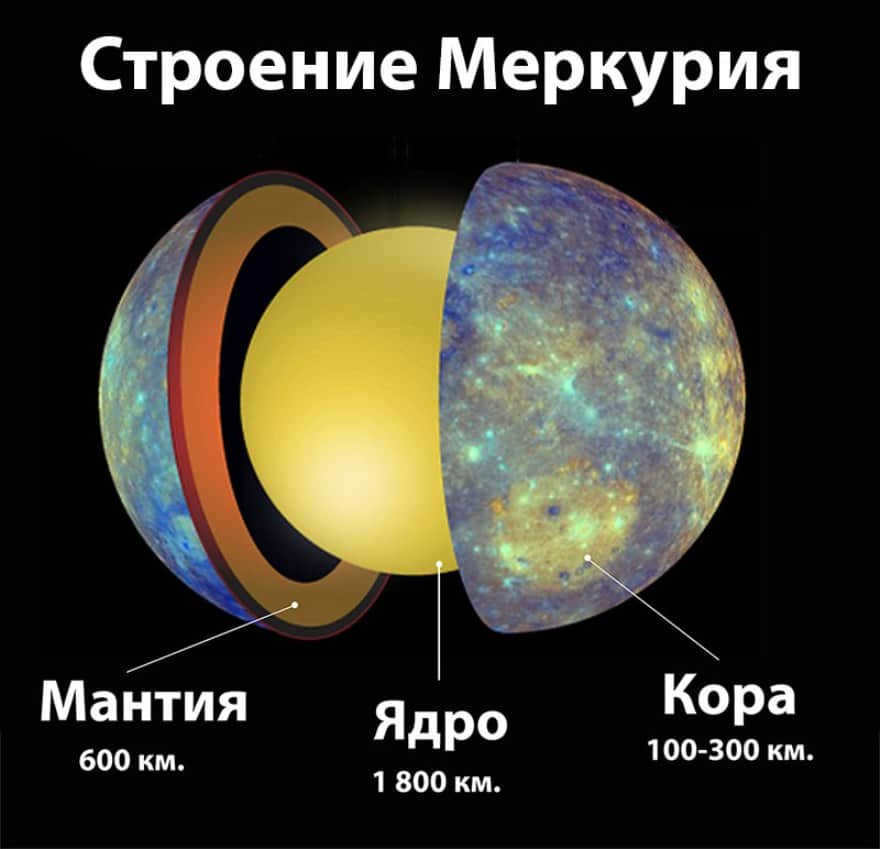
Mercury’s composition consists of a crust, mantle, and core, which define its internal structure.
There is a separate hypothesis proposing that the solar nebula might have contributed to the accumulation of particles that bombarded the planet. Subsequently, the lighter particles drifted away and were not incorporated into the formation of Mercury.
When observed from a distance, the planet exhibits a lunar-like appearance, featuring a landscape adorned with craters, plains, and remnants of lava flows. However, a greater diversity of elements can be discerned.
An adept tarot reader can provide answers to the following inquiries:
What does the future hold for you? How will your relationships unfold? What choices should you make?

Mercury was created 4.6 billion years ago and faced a barrage of asteroids and debris. Since there was no atmosphere, the impacts left noticeable scars. However, the planet remained dynamic, resulting in the formation of lava flows that shaped its plains.
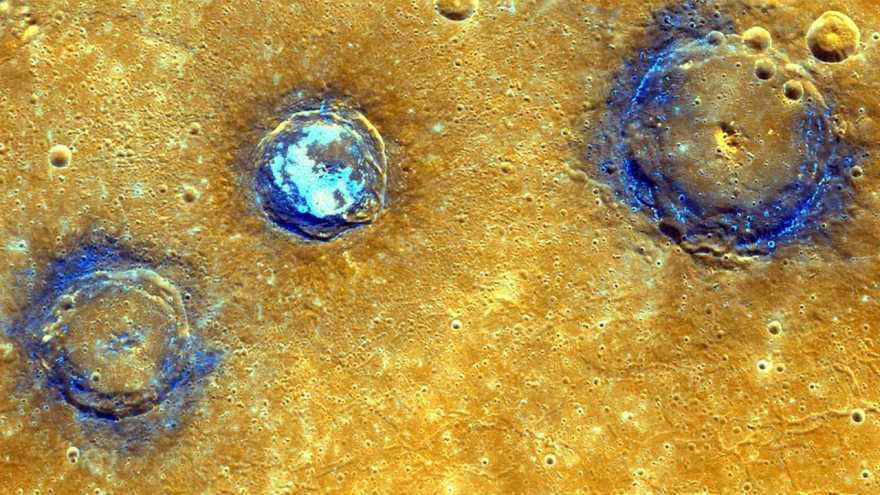
Improved visuals showcasing the Munch, Sander, and Poe craters situated within the volcanic plains (orange) in close proximity to the Calori Basin.
Craters vary in size, ranging from small depressions to basins spanning hundreds of kilometers. The largest crater, known as Caloris (Heat Plain), boasts a diameter of 1,550 kilometers. The impact was of such magnitude that it triggered a lava eruption on the opposite side of the planet. Additionally, the crater itself is encircled by a concentric ring measuring 2 kilometers in height. Approximately 15 substantial crater formations can be observed on the planet’s surface. It is advisable to thoroughly examine a diagram illustrating Mercury’s magnetic field.
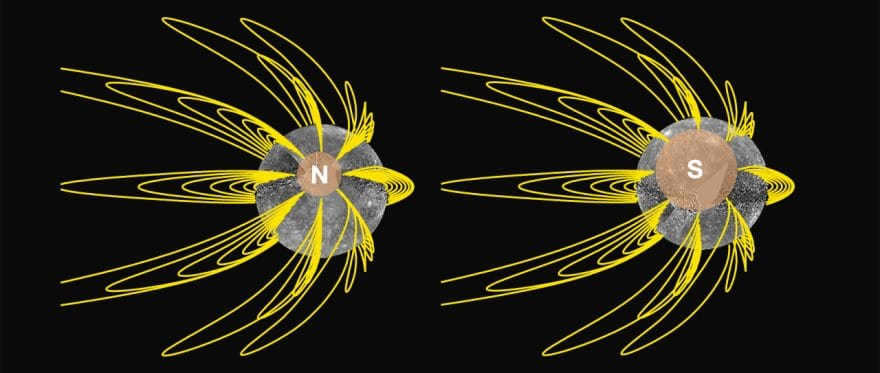

Mercury possesses a planetary magnetic field that is comparable to 1.1% of Earth’s magnetic field intensity. This magnetic field is believed to be generated by a dynamo, much like the one present on our own planet. It is produced by the rotation of a liquid core that is predominantly composed of iron.
This magnetic field is sufficiently powerful to withstand the impact of stellar winds and create a protective magnetosphere. Its strength is also adequate to prevent plasma from infiltrating the winds, leading to the occurrence of surface weathering.
Due to its close proximity to the Sun, the planet experiences excessive heating, which prevents it from retaining its atmosphere. However, researchers have observed a delicate and ever-changing exosphere composed of hydrogen, oxygen, helium, sodium, water vapor, and potassium. The atmospheric pressure is estimated to be around 10-14 bars.
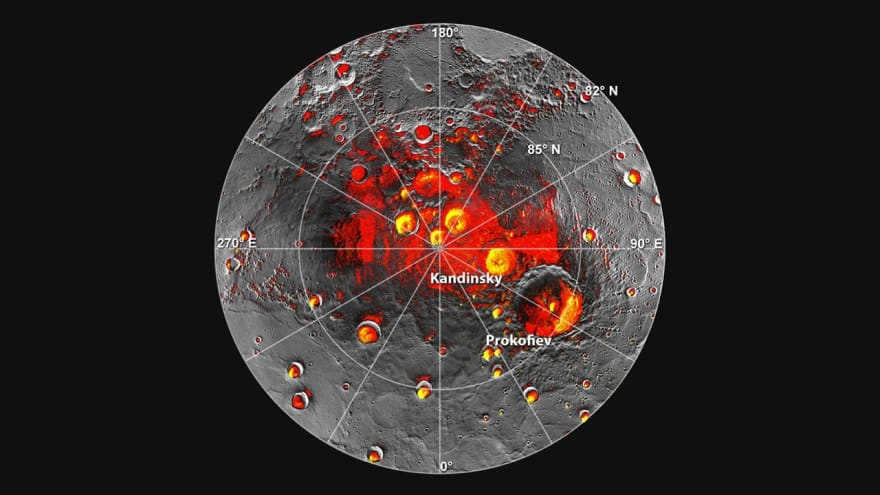

The MESSENGER instrument captured an image of the north pole of the planet. The color red is used to highlight areas in shadow, while yellow is used to indicate the presence of ice.
Due to the lack of an atmosphere, Mercury experiences significant temperature fluctuations. On the sunny side, temperatures can reach as high as 427°C, while on the dark side, temperatures can drop as low as -173°C.
Nevertheless, the lunar surface is abundant with water ice and organic compounds. The intriguing aspect lies in the polar craters, which exhibit varying depths and are void of direct sunlight. It is hypothesized that a substantial amount of ice, ranging from 10^14 to 10^15 kg, may exist at the depths of these craters. The origin of this ice on the moon remains uncertain, although two possible explanations have been proposed. One theory suggests that it could have been delivered by comets that collided with the moon, while another suggests that it may have resulted from the release of water vapor from the moon’s interior.
Overview of the Planet’s Study History
The exploration of Mercury has a rich history that dates back to ancient times. Even without the aid of instruments, this planet has captured the imaginations of people and has appeared in numerous myths and legends. The earliest records of Mercury can be traced back to the Moul Apin tablet, which served as astronomical and astrological Babylonian records.
These ancient observations, dating back to the 14th century BC, often referred to Mercury as the “dancing planet” due to its rapid movement across the sky. In ancient Greece, it was known as Stilbon, meaning “shine,” and was considered the messenger of the gods. The Romans later adopted this concept and bestowed upon it the name we use today, in honor of their pantheon.
The planet known as Chen Xin ("Clock Star") in Chinese culture is associated with water and the northern orientation. This concept is still preserved in Asian culture, where it is considered the 5th element.
Among the Germanic tribes, this planet was connected to the god Odin. The Mayans believed that four owls represented this planet, with two responsible for the morning and the other two for the evening.
In the 11th century, an Islamic astronomer wrote about the geocentric orbital path. In the 12th century, Ibn Bajya observed the transit of two small dark bodies in front of the Sun, which were most likely Venus and Mercury.
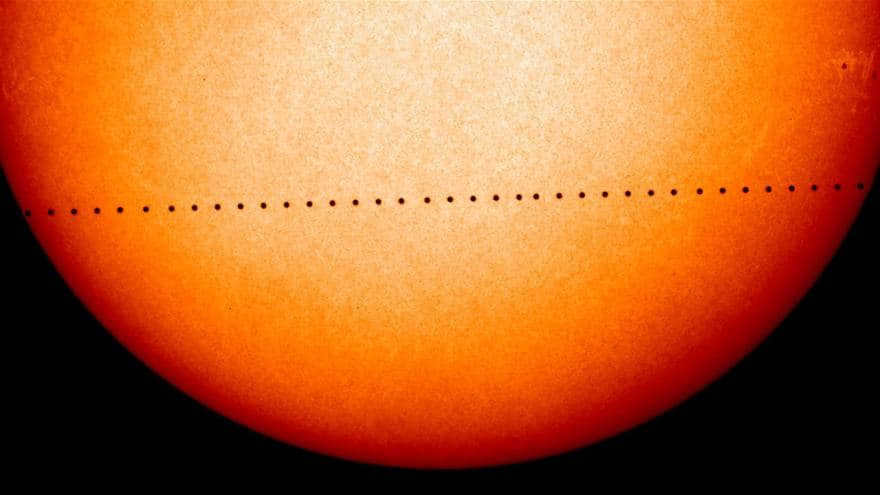

SOHO observed the transit of Mercury through the solar disk in 2006. This event could be observed in Eastern Europe and the eastern hemisphere.
In the 15th century, the Indian astronomer Somayaji of Kerala developed a partial heliocentric model which included Mercury orbiting around the Sun.
The first recorded view of Mercury through a telescope was in the 17th century by Galileo Galilei. He was studying the phases of Venus at the time and did not have enough power in his apparatus to observe Mercury. However, the transit was later observed by Pierre Gassendi in 1631.
A skilled tarotologist can provide answers to your questions.
What does the future hold for you? How will the dynamics of your relationship unfold? What is the optimal choice to make?

The observation of orbital phases was first made by Giovanni Zupi in 1639. This discovery was significant as it confirmed the planet’s rotation around the sun and the accuracy of the heliocentric model.
Giovanni Schiaparelli provided more precise observations in the 1880s, estimating that the planet’s orbital journey took 88 days. In 1934, Eugios Antoniadi created a comprehensive map of the surface of Mercury.
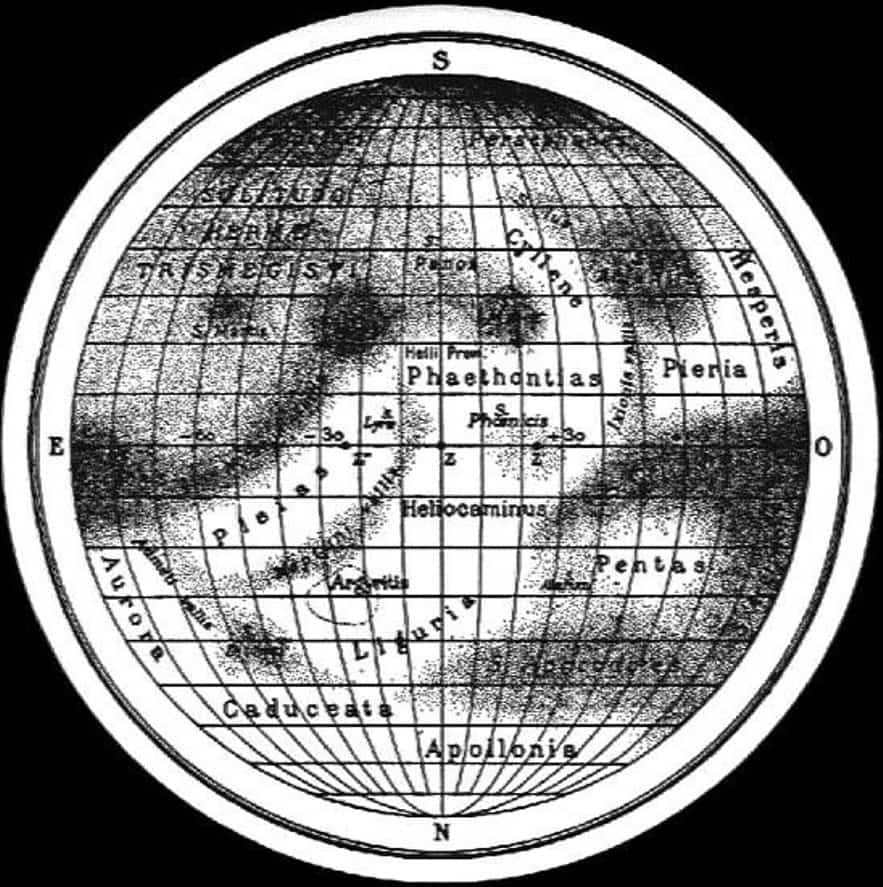
A map of Mercury, created by Antoniadi, was produced.
In 1962, Soviet scientists successfully repelled the initial radar signal. Three years later, the Americans replicated the experiment and determined an axial rotation of 59 days. Traditional visual observations did not yield any new information, but interferometers revealed the chemical and physical properties of the subsurface.
In 2000, the Mount Wilson Observatory conducted the first comprehensive examination of surface features. The majority of the mapping was accomplished using the Arecibo Radar Telescope, which has a range of 5 km.
Discovering the world
Prior to the inaugural drone expedition, our knowledge regarding the morphological attributes was rather limited. The pioneer to venture towards Mercury was the Mariner spacecraft in 1974-1975. It approached the planet on three separate occasions and captured an array of high-resolution images.
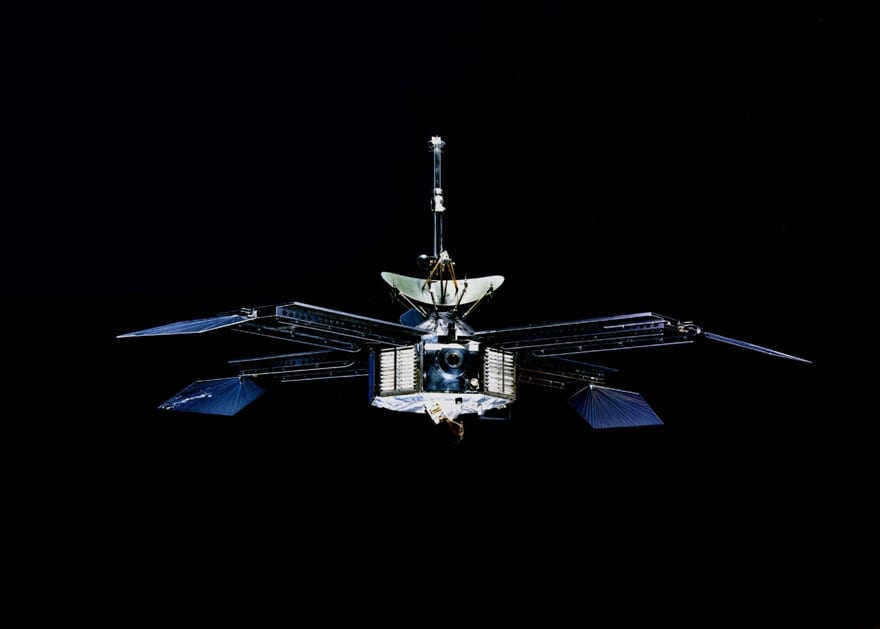

NASA’s Mariner 10 probe, which conducted missions to Venus and Mercury during the 1970s
However, due to its lengthy orbital period, the probe approached the same side on every orbit, resulting in a mapping of only 45% of the overall area.
During its initial approach, the probe was able to detect a magnetic field, and subsequent approaches revealed that it closely resembled Earth’s magnetic field in its ability to deflect stellar winds.
In 1975, the probe exhausted its fuel and communication was lost. Nevertheless, Mariner 10 continues to orbit the Sun and occasionally visit Mercury.
The next messenger was called MESSENGER. Its main objective was to gather information on the density, magnetic field, geology, core structure, and atmospheric characteristics of the target. To achieve this, state-of-the-art cameras were installed to ensure the highest resolution possible, while spectrometers were utilized to identify the various elements present.
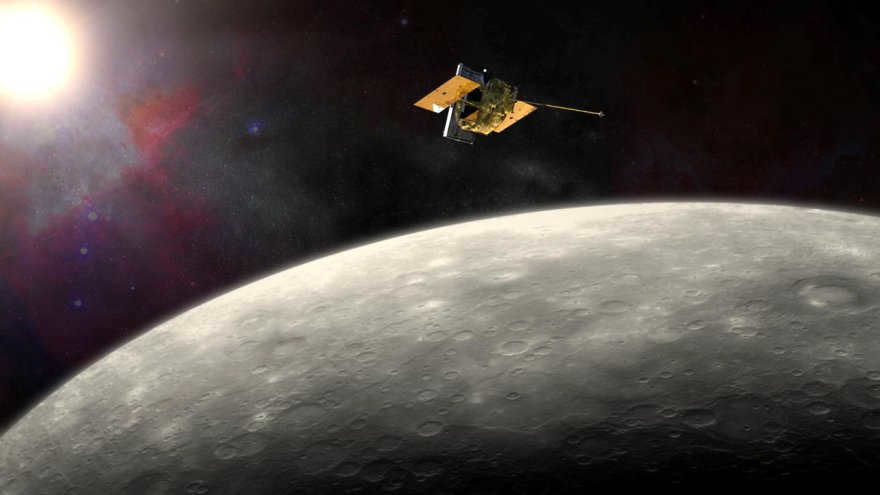
The MESSENGER spacecraft has been in orbit around Mercury since March 2011.
Having been launched in 2004, MESSENGER has successfully completed three flybys since 2008, filling in the gaps left by the Mariner 10 mission. In 2011, it transitioned into an elliptical planetary orbit and began capturing images of the surface.
Following this, another one-year mission was launched. The final maneuver took place on April 24, 2015. Unfortunately, the spacecraft eventually ran out of fuel and crashed into the surface on April 30.
In 2016, the European Space Agency (ESA) and the Japan Aerospace Exploration Agency (JAXA) joined forces to construct BepiColombo, which is expected to arrive at the planet in 2024. This mission includes two probes that will examine the magnetosphere and the surface across all wavelengths.
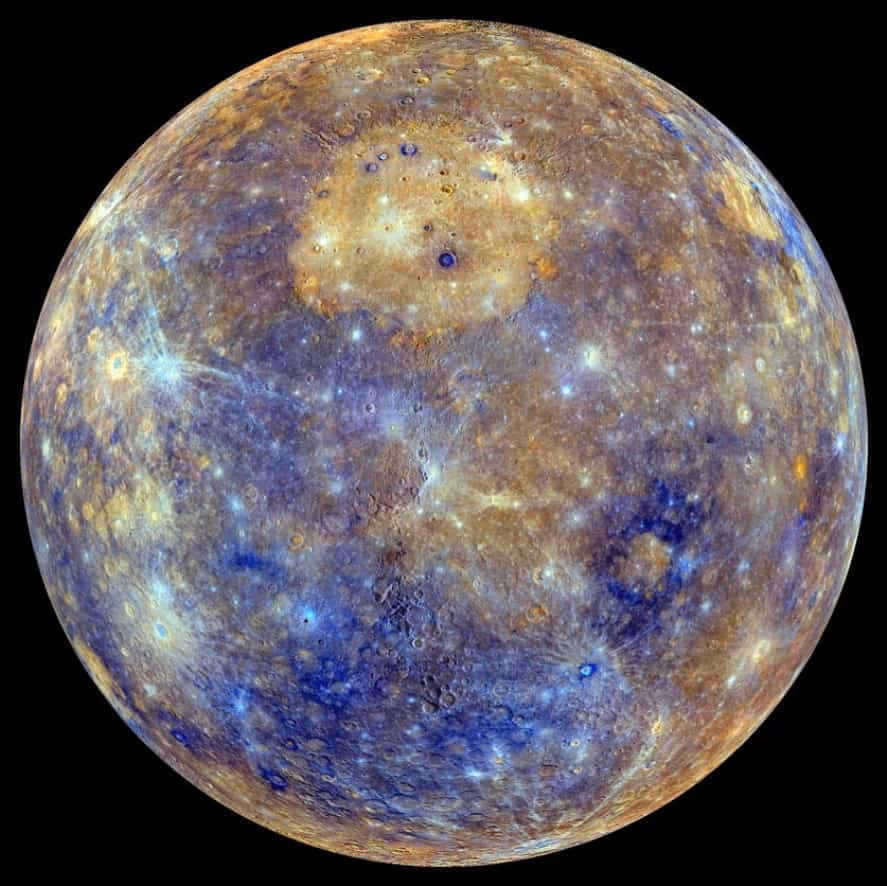
Created from the MESSENGER camera images, this enhanced image of Mercury showcases its unique features.
Mercury, a planet filled with contrasts and contradictions, never fails to captivate. Boasting a molten surface and frozen ice, this intriguing celestial body lacks an atmosphere yet possesses a magnetosphere. As technology continues to advance, we eagerly anticipate uncovering further fascinating insights about Mercury. Don’t miss the opportunity to explore a modern, high-resolution map of Mercury’s awe-inspiring landscape.
Map of the surface
